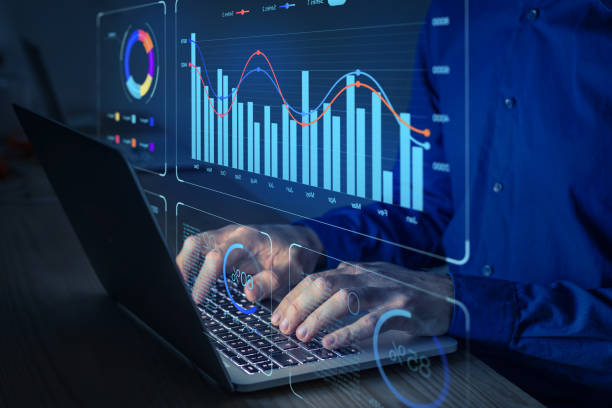Real-time data processing has become a buzzword in the digital age.
When it comes to implementation for businesses, real-time data analytics, one of the most important components of big data analytics today, is the most difficult.
Although it allows you to handle streaming data sources and gain a deeper understanding of the company data, there are numerous difficulties with it.
Because it’s a completely different ballgame to store such a large amount of data and analyze it in real time.
This blog post will explore the challenges and opportunities and provide solutions for overcoming those challenges.
We will provide real-world examples of applying it to different industries.
What is Real-time Data Processing?
Real-time data processing processes data instantly without delay.
It processes data immediately upon creation, providing instant results for real-time action.
It has become increasingly important due to the growing volume of data businesses generate and the need for quick insights to drive decisions.
Because the company can respond quickly and avoid any unexpected issues, it saves both money and time.
The lambda architecture or kappa architecture is the main model for real-time analytics.
However, one size might not fit everyone.
Read: How to Master SQL and Query Databases Easily

Challenges of Real-time Data Processing
While its benefits are evident, there are also significant challenges to overcome.
Here are some of the main challenges that organizations face when implementing it:
Innovative Tech Solutions, Tailored for You
Our leading tech firm crafts custom software, web & mobile apps, designed with your unique needs in mind. Elevate your business with cutting-edge solutions no one else can offer.
Start NowVolume and Velocity of Data
The volume and velocity of data businesses generate have increased exponentially in recent years.
With the growth of the internet, social media, and the Internet of Things (IoT), businesses collect data from various sources.
This data is often unstructured and requires significant processing power to extract useful insights.
Latency and Response Time
Real-time data processing requires immediate results, and any delay in processing can be detrimental to business operations.
Latency, or the time taken to process data can be a significant challenge.
For example, a delay of just a few milliseconds in the stock market can mean the difference between a profitable and unprofitable trade.
Data Quality and Reliability
Accurate and trustworthy data must be processed in real-time.
However, the data produced by firms is frequently unreliable or erroneous.
This may result in inaccurate perceptions and choices, which can have serious repercussions.
Security and Privacy Concerns
Real-time data processing requires the transfer of data over networks, which can be vulnerable to cyberattacks.
In addition, organizations must comply with various data privacy regulations, such as the GDPR and CCPA.
Failure to comply with these regulations can result in significant financial and reputational damage.
Read: Automate API Data Imports: Save Time & Enhance Efficiency
Solutions to the Challenges
Organizations can implement a range of solutions to overcome the challenges of processing data in real-time.
Here are the main solutions to improve speed, accuracy, and reliability in real-time data analytics:
Distributed Computing and Parallel Processing
Distributed computing is the use of multiple computers to solve a single problem.
Distributing the processing load across multiple computers speeds up real-time data processing.
Parallel processing, on the other hand, is the use of multiple processors on a single computer to solve a single problem.
Both solutions improve the speed and efficiency of processing real-time data.
Stream Processing and Complex Event Processing
Stream processing handles data in real-time as it is generated.
It extracts useful insights from real-time data and delivers immediate results.
On the other hand, complex event processing is the ability to identify and analyze patterns in real-time data.
It can also detect anomalies or patterns that traditional analytics might miss.
In-Memory Databases and Caching
In-memory databases store data in memory, providing faster data access than traditional disk-based storage.
Seamless API Connectivity for Next-Level Integration
Unlock limitless possibilities by connecting your systems with a custom API built to perform flawlessly. Stand apart with our solutions that others simply can’t offer.
Get StartedCaching stores frequently accessed data in memory.
Both of these solutions can improve the speed of data access, which is critical for real-time data processing.
Real-Time Analytics and Machine Learning
Real-time analytics and machine learning can provide immediate insights from real-time data.
Machine learning algorithms can analyze data in real time and provide insights that can drive business decisions.
Real-time analytics can also provide immediate insights into operational efficiency, customer behavior, and other key performance indicators.
Read: Cloud Data Security: How to Protect Your Data in the Cloud
Opportunities Real-time Data Processing Offers
While It presents significant challenges, it also offers numerous opportunities.
Here are some of the key benefits:
Improved Customer Experience and Personalization
Real-time data processing personalizes the customer experience.
By analyzing real-time data, businesses can offer personalized recommendations, offers, and tailored experiences.
This can improve customer satisfaction and loyalty, which can drive revenue growth.
Enhanced Operational Efficiency and Decision-Making
Decision-making and company operations can both be optimized with real-time data processing.
Businesses can spot inefficiencies and make data-driven decisions by giving them real-time insights into critical performance metrics.
This may increase operational effectiveness, lower expenses, and more profitability.
Better Risk Management and Fraud Detection
Real-time data processing can be used to identify and mitigate risks in real time.
It can be used, for instance, in the banking sector to spot fraudulent transactions, spot market patterns, and improve investment plans.
It can also be used to recognize security risks and lessen online assaults.
New Revenue Streams and Business Models
Real-time data processing can be used to identify new revenue streams and business models.
Analyzing real-time data allows businesses to identify new market opportunities, create new products and services, and optimize pricing strategies.
This can lead to increased revenue growth and improved profitability.
Read: The Role of Data Analytics in Decision-Making and Business Strategy

Real-World Examples of Real-Time Data Processing
It has numerous applications in various industries.
Here are some examples of how it is used in different industries:
E-commerce and Online Retail
Real-time data processing provides a personalized customer experience in e-commerce and online retail.
Transform Business with Custom CRM & ERP Solutions
Elevate your operations with a CRM or ERP tailored for you. Let’s build the perfect solution that others can't replicate—crafted to match your business's needs like no other.
Get StartedBy analyzing real-time data, businesses can provide personalized product recommendations, optimize pricing strategies, and improve inventory management.
It can also be used to detect and prevent fraud in online transactions.
Financial Services and Trading
Real-time data processing is critical in the financial industry, where even a few milliseconds of latency can have significant consequences.
It optimises investment strategies, detects fraudulent transactions, and identifies market trends. High-frequency trading relies on it to execute trades quickly and profitably.
Healthcare and Medical Research
Real-time data processing is used in healthcare and medical research to improve patient outcomes and accelerate medical research.
It can help monitor patient vital signs, detect anomalies, and provide real-time alerts to medical staff.
It can also help analyze medical data and accelerate medical research.
Internet of Things (IoT) and Smart Devices
Real-time data processing is used in IoT and smart devices to enable real-time decision-making.
IoT devices generate vast amounts of data, which is required to extract useful insights.
It is used in smart homes, smart cities, and other IoT applications to provide real-time monitoring and control.
Conclusion
Real-time data processing offers numerous benefits but it also presents significant challenges and opportunities for organizations.
To overcome the challenges, organizations can implement a range of solutions.
It is used in various industries, including e-commerce, financial services, healthcare, and IoT.
As organizations continue to generate more data in real-time, its importance will only continue to grow.
Before you go…
Hey, thank you for reading this blog to the end. I hope it was helpful. Let me tell you a little bit about Nicholas Idoko Technologies.
We help businesses and companies build an online presence by developing web, mobile, desktop, and blockchain applications.
We also help aspiring software developers and programmers learn the skills they need to have a successful career.
Take your first step to becoming a programming boss by joining our Learn To Code academy today!
Be sure to contact us if you need more information or have any questions! We are readily available.











